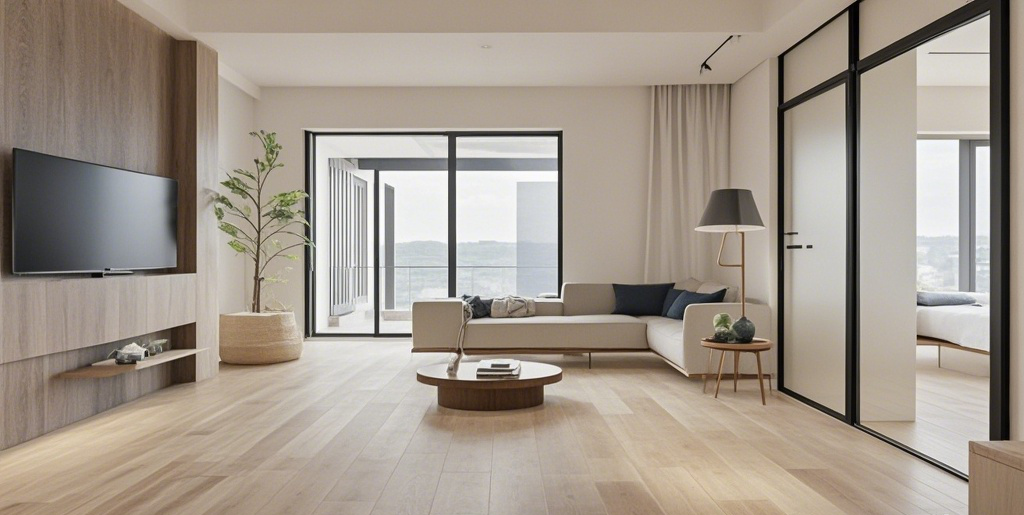
When installing SPC (Stone Plastic Composite) flooring, the method of installation—whether it’s glued down or floating—significantly affects the ease of the process and the flooring’s performance. Using the wrong method can lead to issues like instability, warping, or excessive wear.
SPC flooring is typically not glued down; most products are designed to be installed using a floating click-lock system. However, glue-down installation is an option in specific scenarios, such as commercial spaces or areas requiring extra stability. Your choice of method should depend on the subfloor, the environment, and the manufacturer’s recommendations.
Read on to learn about SPC flooring installation methods, when glue-down is appropriate, and tips for achieving the best results.
What is the standard installation method for SPC flooring?
SPC flooring is most commonly installed using a floating method with a click-lock mechanism, which offers simplicity and flexibility.
Standard method snippet
The standard installation method for SPC flooring is the floating click-lock system, which does not require glue or nails, allowing for easy installation and removal.

- Floating installation: SPC planks are connected using a tongue-and-groove click-lock system, creating a "floating" floor that rests on top of the subfloor without adhesives.
- Ease of use: This method simplifies installation, making it DIY-friendly and faster than glue-down options.
- Subfloor versatility: Floating installation works well over a variety of subfloors, including concrete, plywood, and existing flooring.
| Feature | Floating Installation Benefits | Example Use Cases |
|---|---|---|
| No adhesive required | Faster, cleaner installation | Residential spaces |
| Subfloor adaptability | Works with uneven surfaces | Apartments, remodels |
| Easy removal | Simple replacement/repairs | Rental properties |
SPC flooring must always be glued down.False
Most SPC flooring is designed for floating installation, which does not require glue.
When is glue-down installation appropriate for SPC flooring?
While the floating method is the most popular, there are specific situations where glue-down installation might be preferred or required.
Glue-down suitability snippet
Glue-down installation is appropriate for SPC flooring in high-traffic commercial spaces, areas with heavy furniture, or when extra stability is needed.

- High-traffic areas: Commercial spaces or heavily used areas may benefit from glue-down SPC flooring, as it offers enhanced stability and prevents shifting.
- Heavy furniture: Glue-down installation reduces the risk of flooring movement under the weight of heavy furniture or appliances.
- Moisture concerns: In areas with fluctuating humidity or potential water exposure, glue-down methods help minimize expansion and contraction.
| Environment | Glue-Down Applicability | Recommended Actions |
|---|---|---|
| Commercial spaces | Recommended | Use pressure-sensitive adhesive |
| High-humidity areas | Sometimes necessary | Verify manufacturer guidelines |
| Heavy furniture zones | Beneficial | Secure for added stability |
Glue-down installation is better for all SPC flooring applications.False
Glue-down is beneficial in specific cases but is not always necessary for residential or low-traffic areas.
What are the advantages and disadvantages of glue-down SPC flooring?
The glue-down installation method has unique benefits and drawbacks compared to floating SPC flooring.
Pros and cons snippet
Glue-down SPC flooring offers enhanced stability and durability but is harder to install and less forgiving for subfloor imperfections.

-
Advantages:
- Enhanced stability and reduced movement, especially in high-traffic or moisture-prone areas.
- Better sound insulation compared to floating floors.
- Reduced risk of plank separation over time.
-
Disadvantages:
- Requires more time, skill, and materials for installation.
- Harder to repair or replace damaged sections.
- Demands a perfectly smooth, clean, and dry subfloor.
| Feature | Glue-Down Pros | Glue-Down Cons |
|---|---|---|
| Stability | Prevents shifting | Permanent, harder to remove |
| Noise reduction | Reduces sound transmission | Longer installation time |
| Subfloor requirements | Ensures firm adhesion | Demands flawless subfloor |
Glue-down SPC flooring is easier to install than floating floors.False
Glue-down installation is more labor-intensive and requires a smooth subfloor.
How do you decide between floating and glue-down SPC flooring?
Choosing the right installation method depends on your specific needs, environment, and long-term plans for the space.
Decision snippet
Opt for floating SPC flooring for residential spaces or DIY projects, and glue-down for commercial areas or where enhanced stability is required.

- Floating method: Ideal for residential spaces, remodels, or rental properties where ease of installation and removal is important.
- Glue-down method: Best suited for commercial areas, permanent installations, or spaces with heavy furniture or high humidity.
| Factor | Floating Method Benefits | Glue-Down Method Benefits |
|---|---|---|
| Installation ease | Simple, fast, DIY-friendly | Professional installation |
| Stability | Sufficient for homes | Superior for heavy traffic |
| Repair/replace ease | Simple plank removal | Challenging due to adhesives |
The floating method is always the best choice for SPC flooring.False
Glue-down offers specific advantages in high-traffic or moisture-prone areas.
Conclusion
SPC flooring is most commonly installed using a floating click-lock system, making it quick and easy for residential and light commercial applications. However, glue-down installation provides enhanced stability and durability for high-traffic or heavy-use spaces. Understanding your environment and needs will help you choose the right method for your project.
Call to Action
Need help deciding on the best installation method for your SPC flooring? Contact our experts today for personalized advice and professional installation services. Let us help you achieve a seamless and durable flooring solution!
External Footnotes Links
- Floating vs. Glue-Down SPC Flooring Guide
- How to Install SPC Flooring
- Glue-Down SPC Flooring Benefits
- Click-Lock System Explained
- Commercial Flooring Solutions with SPC
- Subfloor Preparation for SPC Flooring
- Moisture Control in SPC Installations
- Soundproofing with SPC Flooring
- Repairing Glue-Down Flooring
- SPC Flooring Cost Breakdown


